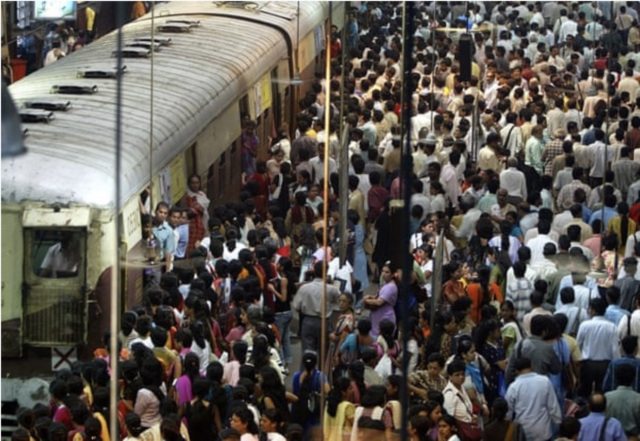NEW DELHI: Forty days into lockdown and our major urban areas are reeling uncontrollably under the onslaught of the virus. These are the places which have awarded themselves impressive epithets such as ‘City of Dreams’, ‘City of Opportunity’, ‘City of Destiny’, ‘City of Joy’, ‘City that Never Sleeps’, ‘Maximum City’ and so on. The ongoing pandemic has ripped out the cloaks covering the hollowness of such glowing descriptions. These urban areas have become cities of despair, devastation and death. In the aftermath of destruction of lives and livelihoods across the country, it will not be just prudent but imperative for our leaders to dispassionately audit the preference, favour and importance that we have hitherto accorded to our cities. All these places that have fallen like ninepins in Corona’s bowling alley are either state, commercial or financial capitals. Let me give the reader a layman’s perspective on why this has been so and launch a few thoughts as we gather our tattered pieces together whenever this crisis passes.
First, our thinking has been city-centred. And this is why cities have continued to get crowded to such unsustainable levels that they were forced to expand outwards. What were once sprawling areas became urban slums. I spent the first twelve years of my life in Mumbai—and many more since at regular intervals. In my childhood days, the city of Mumbai meant only South Mumbai to many. For me, the city started at Apollo Bunder and ended at Victoria Terminus. Some less fortunate people had to stay as far as Mahim, Dadar or Sion. Andheri, Jogeshwari, Khar, Malad etc, places that were not even on my mental map. Now Mumbai extends beyond Virar to the West, almost up to Kalyan along the central axis and through Navi Mumbai along the harbour route into the east almost as far as Pune. This is true of all large cities in the country. Such expansion has caused an unchecked influx of people into cities and perpetuated the vicious cycle of ‘more people – more concrete – less vegetation – more load on services – ignoring known ill-effects of over-urbanisation – more influx…’, taking cities into a downward spiral in several other parameters of human development.
Second, our construction fetish in cities has been the reason for many ills. Strong builder lobbies with political patronage call the shots whenever more concrete has to be added into our cities. All urban and town planning norms are cast away and justified with reasons such as redevelopment, ease of business, employment generation and other such unconvincing arguments. Ask the people of Chennai who were devastated by floods and they will tell you how unchecked urbanisation was among the prime reasons for the disaster. Despite torrential rain in Mumbai year after year, why is it that rain still brings road and rail traffic to a standstill several times each monsoon? Because mindless constructions have ruined natural and artificial drainage systems that are supposed to work at such times. We are all either helpless bystanders or perhaps even perpetuators of this unplanned and damaging ‘development’ effort.
Third, expansion of major cities, loss of agricultural land (and hence traditional livelihood) and our deep reluctance to redevelop our Tier 2/Tier 3 cities to support better livelihood, education, public health and essential services have forced large-scale migrant labour influx into cities. We cannot blame them for seeking an alternate livelihood in lieu of the one that we have destroyed. This influx of migrants into cities has resulted in sub-human living conditions in slums and shanties. To make matters worse, most of these people are daily wage earners at the mercy of agents and middlemen who run labour mafias. They make their money without the slightest accountability for the welfare of the migrants. The unregulated ‘unorganised sector’ permits such things to happen with impunity. There are obviously benefits to some people in the unorganised sector remaining ‘unorganised’. This is slave trade in its modern avatar. These people not only live in the most deprived and unhygienic conditions but also bear the brunt of any epidemic or disruption in livelihood.
Fourth and final, our megacities are glamorised far in excess of what they should be. Films, fashion, theatre and art are resident mainly in these cities, at least the ones that make money. All the rich and famous live in these cities. All financial hubs, major trading centres, market places, educational institutions, malls, supermarkets, international and domestic airports are located in these cities. All political capitals, high courts, corporate headquarters, government entities and every institution of consequence operate out of these cities. If all the money is going to be invested, circulated, controlled and spent in and from these cities, if all businesses are going to be run from there, if all academic institutions are going to operate from these centres and all power is going to be concentrated in a handful of places, where is the hope for the future in such a large and populous country as ours?
If we think this is a problem serious enough to be acknowledged and acted upon, here are a few thoughts to chew on:
- Freeze new constructions in metros. Any new construction must be accompanied by commensurate demolition and creation of open spaces/green areas.
- Re-develop our Tier 2/3 cities into multiple capitals for states—political, judicial, financial, commercial, art, manufacturing etc— with their own integral ecosystems. Decongest the metros. Leverage technology for dispersed governance. This will distribute job creation across the country.
- Move selected educational institutions and vocational training centres out to smaller cities that can become education hubs of the future. Create adequate healthcare facilities at dispersed locations. Leverage technology for dispersed learning and telemedicine.
- Deglamorise the metros. Crowds, dirt, stretching of services, crime and poverty are nothing to be proud of. Run publicity campaigns to get people to invest and work at other locations.
- Regulate property pricing and cost of living in metros to make them realistic. Take over empty/defaulting properties and re-use them for slum eradication. Demolish properties under litigation and convert them into green zones, open spaces or public parks.
- Implement a five-year plan for eradication of slums.
- Incentivise setting up of businesses in smaller towns and cities. No new permissions should be accorded to set up businesses in metros which have any penalty on land, vegetation or services.
- Create social security structures for labour, domestic help and other daily wage earners to prevent migration-related problems. Replace the agent/thekedaar system with a more robust institutional mechanism.
- Do not accord permission for establishing any new place of worship in crowded cities. Large religious gatherings should take place under close government scrutiny.
- Regulate inter-state movement of personnel in a manner that prevents unchecked migration across states, especially into urban areas.
- Improve internal transportation systems within the country so that permanent migration to any other place is discouraged and people can return with ease to their place of residence whenever necessary.
- Incentivise agriculture and environment preservation and make these sectors attractive employment avenues. Stop any more conversion of agricultural land and forest land for commercial or construction purposes. This will meet triple objectives of moving the workforce to farmlands, regenerating the environment and creating surplus food production capacity.
Needless to mention, altering the status quo would require ‘enlightened governance’ and the ‘will to overcome severe incumbent resistance’ of people and organisations that stand to gain immeasurably from over-development of our cities. Besides, there is also an immediate need to engineer a sustained negative population growth. This is a thorny and complex matter but needs to be firmly addressed with education, family-planning norms, liberal incentives and strong disincentives.
(Reproduced with permission from ‘The Megaphone’)





